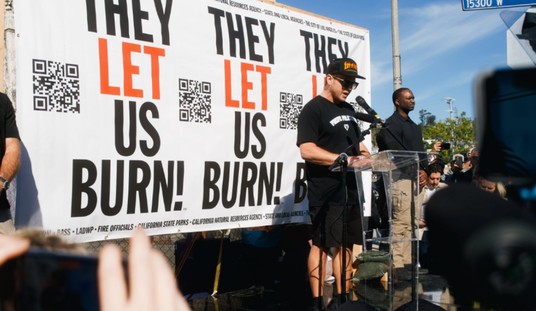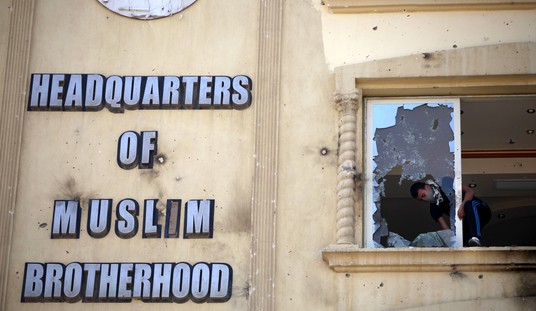We almost all surely know the story of the RMS Titanic:
“(A) British passenger liner that sank in the North Atlantic Ocean in the early hours of 15 April 1912, after colliding with an iceberg during her maiden voyage from Southampton to New York City. There were an estimated 2,224 passengers and crew aboard, and more than 1,500 died, making it one of the deadliest commercial peacetime maritime disasters in modern history. “
And aside from guys who have been serially single since 1997, nigh everyone has seen the movie of the same name.
The iceberg famously sank the ship. But many lives were needlessly lost – for a much less known reason:
“At 12:15 AM on April 15, 1912, a message rang out across the Atlantic: ‘CQD MGY 41.46 N 50.24 W.’ The message, sent by a Marconi radio operator, came from the doomed RMS Titanic 30 minutes after striking the iceberg that would end the ship’s maiden voyage.
“It was followed by a series of messages from the ill-fated vessel, many of which went unreceived, or failed to establish any meaningful contact.
“Meanwhile, novice radio operators on land clogged the airwaves with false news of the sinking, leading to the early spread of misinformation, and later, overwhelming public ire.
“While the Titanic’s radio and its operators were to thank for the 745 survivors of the tragedy, the malicious behavior of amateur operators was blamed in the disaster’s aftermath – raising questions of how something so disastrous had been allowed to occur, and what could have been done to avoid it altogether.”

(Note the April 15 Titanic tragedy date? But one year later, the US ratified the Sixteenth Amendment – creating the income tax. And we picked as Tax Day – April 15. Strange….)
What could have been done about the radio confusion – was done almost immediately after:
“The Radio Act of 1912 is a United States federal law that mandated that all radio stations in the United States be licensed by the federal government, as well as mandating that seagoing vessels continuously monitor distress frequencies.
“The original bill was initiated during the investigations following the sinking of the Titanic. The act set a precedent for international and federal legislation of wireless communications. It was followed by the Radio Act of 1927.”
As demonstrated by the follow-up 1927 Act, the law needs periodic updating. As technologies and the facts on the ground change.
Now is one of these updating times. And yesterday’s “novice radio operators…clogg(ing) up the airwaves” – are today’s pirates squatting on airwaves that do not belong to them. Which indeed clogs up the airwaves.
So we need Congress to take a look at this:
Preventing Illegal Radio Abuse Through Enforcement (PIRATE) Act:
“This bill amends the Communications Act of 1934 to address unlawful radio broadcasting (called ‘pirating’), including:
“(M)aking the fine for a pirate radio broadcasting violation up to $100,000 per day (Currently, there is a general penalty of up to $10,000 for any wire and radio communications law violation.);
“(E)stablishing a fine of up to $2,000,000 for any person who facilitates pirate radio broadcasting (“facilitating” includes providing access to property or providing physical goods or services);
“(R)equiring the Federal Communications Commission to focus on the top five radio markets twice a year to eliminate pirate radio broadcasting.”
The old penalties for pirating are puny. This law update – rightly, substantially beefs them up.
The commercial ramifications of pirating are huge. Think of the tens of thousands of over-the-air commercial television and radio stations.
And like in the time of the Titanic – lives are at stake. Behold the Emergency Alert System (EAS):
“The Emergency Alert System (EAS) is a national warning system in the United States put into place on January 1, 1997 (approved by Federal Communications Commission (FCC) in November 1994).
“When it replaced the Emergency Broadcast System (EBS), which in turn replaced the CONELRAD System.
“The official EAS is designed to enable the President of the United States to speak to the United States within 10 minutes. In addition to this requirement, the EAS is also designed to alert the public of local weather emergencies such as tornadoes and flash floods (and in some cases severe thunderstorms depending on the severity of the storm).”
You’ve for decades seen and heard on TV and radio – tests of the variously named systems. Including now on our smartphones.
The last thing we need – is pirates screwing up the system:
“Interference from illegal pirate stations may cause a break in this vitally important system. An example of this problem was the basis for a complaint at the FCC in 2015. WWRV 1330 AM, which served the Hispanic community in New York City and Northern New Jersey, was required to monitor two stations as part of the New York State EAS plan – WINS 1010 AM and the New York public radio station – WNYC FM 93.9.
“However, because of an illegal pirate station operating in New Jersey on FM 93.7 (a channel adjacent to WNYC’s 93.9) it became difficult to monitor and receive a clear signal from WNYC. As a result, the WWRV had to change its EAS monitoring assignment to WABC AM 770.
“The danger is compounded because pirate radio stations are unpredictable. Power levels rise and fall. Stations switch channels and locations at will. As a result legitimate stations may not realize they have an issue with the stations they are monitoring until an emergency requiring an EAS alert takes place.”
Oh – and no one needs clear radio airwaves for airplanes, right? The things we created to get places faster than – and unreachable by – Titanic-esque ocean liners:
“A warrant recently unsealed in U.S. District Court details the seizure of radio transmission equipment of a pirate radio station broadcasting from Brockton…
“According to an affidavit filed with the civil complaint, the unlicensed FM radio station was causing interference to Federal Aviation Administration (FAA) frequency 120.6 MHz, which is one of the primary frequencies used by pilots to communicate with FAA controllers when flying in the Boston metropolitan area.
“The FCC issued verbal and written warnings to the residents of 9 Rutland Street on several occasions, but the radio station continued to broadcast.”
The warnings obviously weren’t enough.
I’m guessing the PIRATE Acts muscled up fines – will be additionally persuasive.
So here’s hoping Congress quickly takes a serious legislative look at the bill.














Join the conversation as a VIP Member